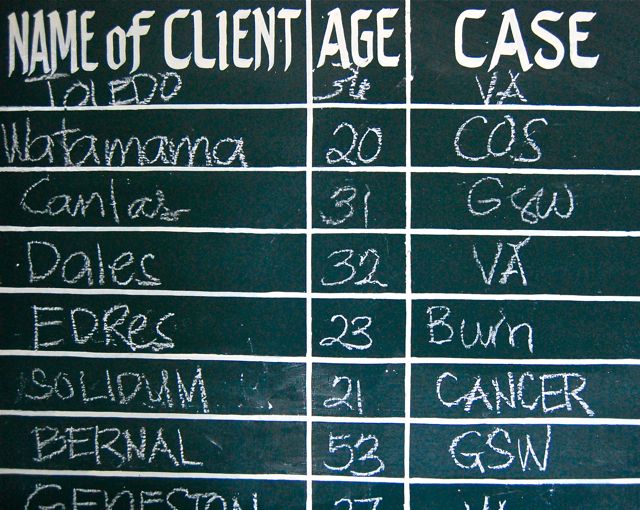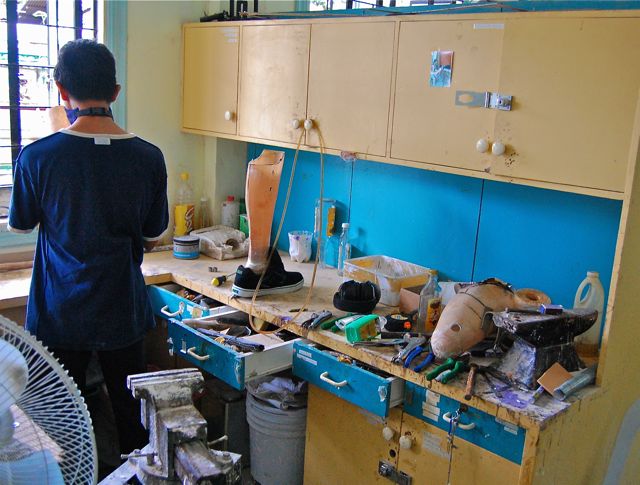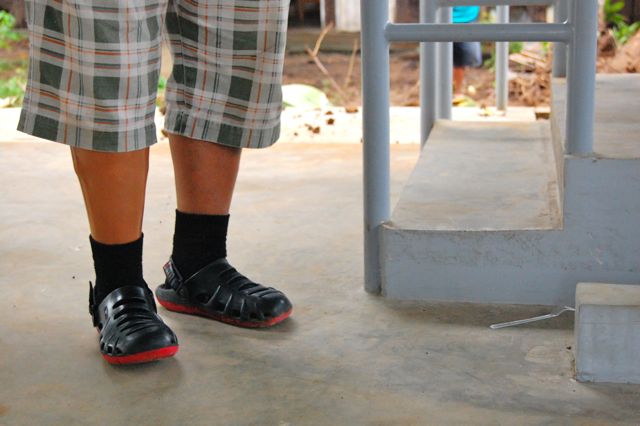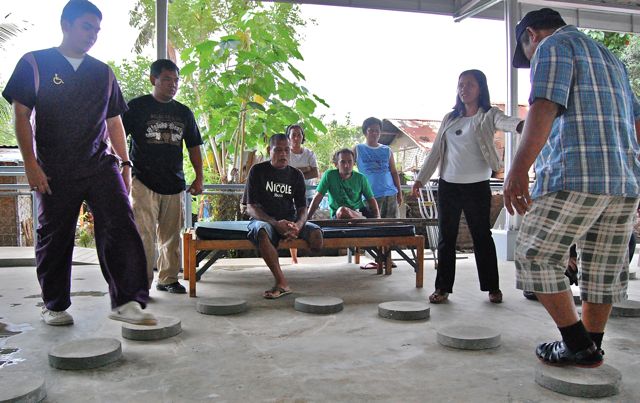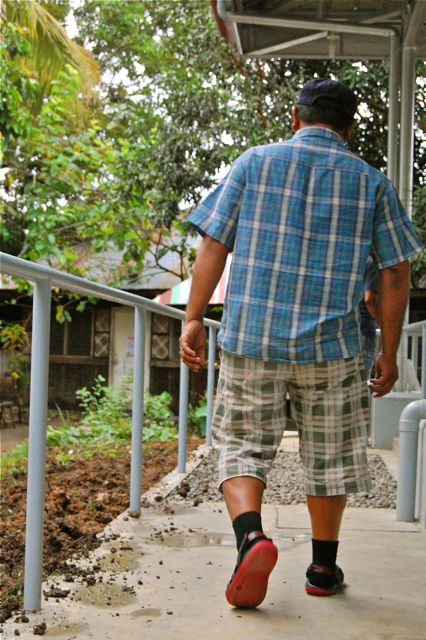(In January 2011, and thanks to the ICRC Young Reporter Competition, I had the fortune of visiting the ICRC mission in the Philippines to report on the situation of youth. This post is part of a series I wrote on this visit. Click here to see the rest of the posts.)
(One of the main partners of the organization is the Davao Jubilee Center, about I which wrote this feature for the ICRC office in the Philippines.)
The wooden walls of Jubilee store more life stories than one can appreciate at first sight. The workshops where its prostheses are produced are inhabited by technicians that can be counted with the fingers of one hand, and they aren’t outnumbered by the therapists helping beneficiaries through their prosthesis-related training. The waiting area for patients and their relatives could be easily filled up if two patients brought their families with them (and I’m just talking about the nuclear ones). However, a board full of names of beneficiaries, their cause of visit and other medical information lets one visualize the number of people who pass by each month in the current Center. After all, 25 years of life for a project on the ground are more than enough to create fame in a community where the need for the services provided by Jubilee is endless.
Jubilee supports disabled people (and those around them) in different ways: they do ear and eye screening, medical missions, prosthesis production, rehabilitation… And, whereas it’s not officially listed as one of their objectives, they also give beneficiaries hope through every service they provide. In informal conversations about the project, successes aren’t measured just by numbers of prostheses provided, or of rehabilitations completed; they are also measured by the testimonials from beneficiaries that are filled with renewed faith in the possibilities of employment, self-sufficiency and happiness that they previously thought would never exist for them.
The ICRC contributes to the mission of Davao Jubilee Center in the prosthesis area; prostheses are one of the main needs of those affected physically by conflict. The support given by ICRC to this center adopts many forms: from directly sponsoring victims of conflict so that they can receive a prosthesis produced in the center, to helping its workers become certified orthopaedic technologists in Cambodia; from building an appropriate training area where beneficiaries can become used to their prosthesis, to helping workers through the transition to newer, more efficient prosthesis technologies.
The day we visited Jubilee, we met two beneficiaries of the ICRC prosthesis sponsorships. One of them was then going through training for the first time after his prosthesis had been produced, and the other one had undergone the same training years before; now he works at Jubilee as a prosthesis technician (and feeding personnel and beneficiaries, who say he makes a very good chicken curry). Despite the differences in their lives, they both arrived at Jubilee for the same reason: both lost one of their limbs to a stray bullet while working in their fields at home. Little was said about these incidents; for both these men, there was more importance attached to the moment they had to make not themselves, but their families, come to terms with the need for an amputation.
“I had to tell my family to go buy me something at the store so that they would be away from the hospital when I signed the medical consent forms”, said one of them; the one who works at Jubilee now. He didn’t say much about what happened between then and his arrival at Jubilee; however, we can infer that there were many days of gloomy buildup for the descriptions he makes of feelings expressed by the patients he meets every month, and that he said he can understand because of his experience: he says many are confused about what they need to know, and carry the lack of hope that they live with from the moment they become amputees. He also says that, “when they arrive, they don’t know how to smile.”
But, after some time, these feelings begin to change in the other event that marks a milestone for these two men: the day when they try their prosthesis on for the first time. When asked about the toughest part of the rehabilitation, the current patient of Jubilee replied, without a hint of hesitation, that it was that very moment when he had to stand up on both limbs. And that is something maybe overlooked by those of us who have never gone through amputation, but that all of the beneficiaries relate to: the center of balance that controls all the major movements of the body needs to change to adopt the new limb.
But they both said that the feeling of helplessness gets replaced with hope every day they go through the track, training their body to take them through concrete, rocky roads and stairs. The current patient of Jubilee says he is looking forward to walking back to work (he has been a radio operator for the past 7 years); the prosthesis technician (and curry expert) likes outpacing the other pedestrians whenever he travels around the city.
They both smiled plenty throughout the chat we had with them. Maybe Jubilee should start citing ‘teaching beneficiaries how to smile again’ as one of its achievements.
Photo credits: © ICRC/García Montes, Mariel
The here shown material has been produced with the authorization of The International Committee of the Red Cross (ICRC). However, it does not necessarily reflect the ICRC’s views, and the ICRC may not be held liable for any content here shown.
